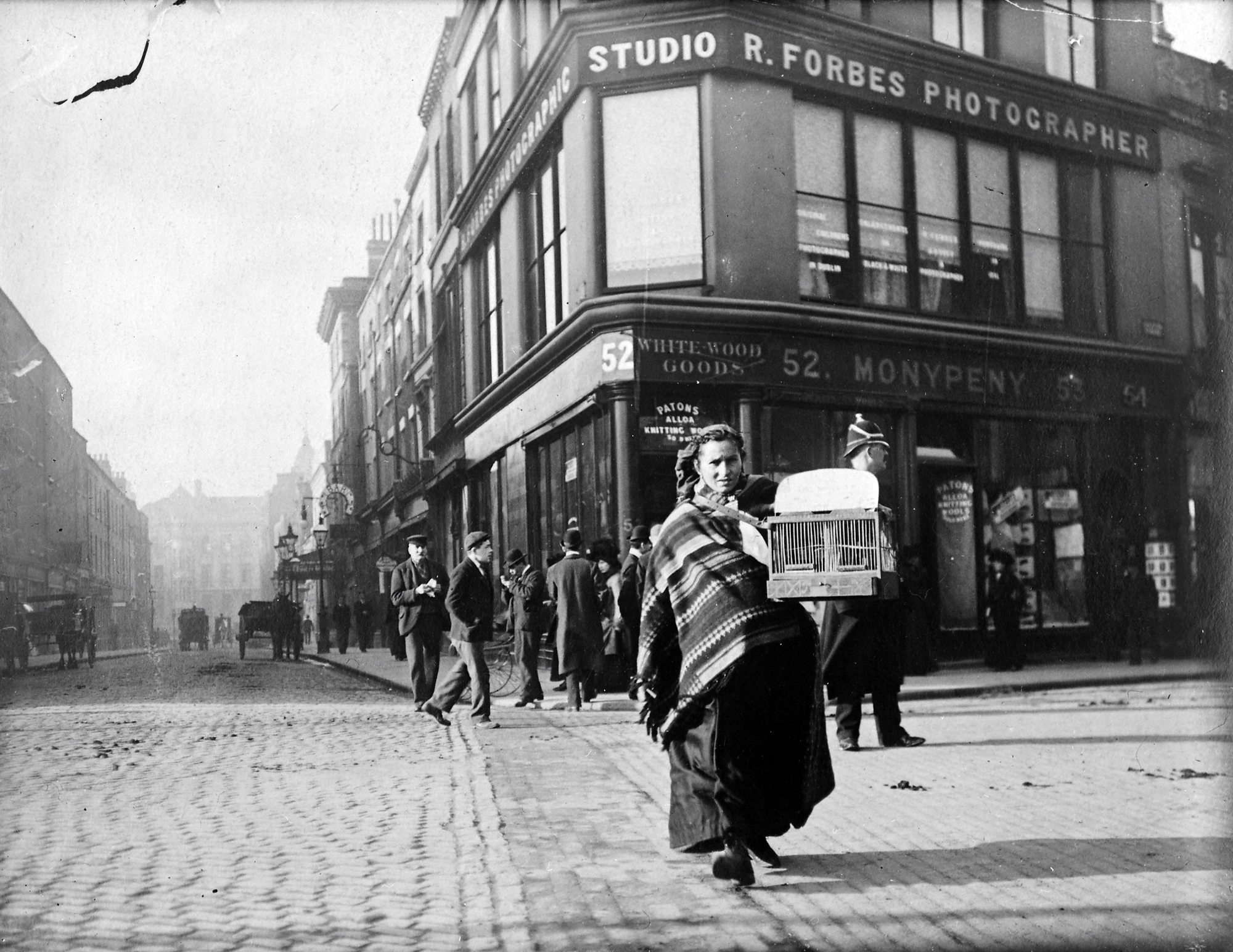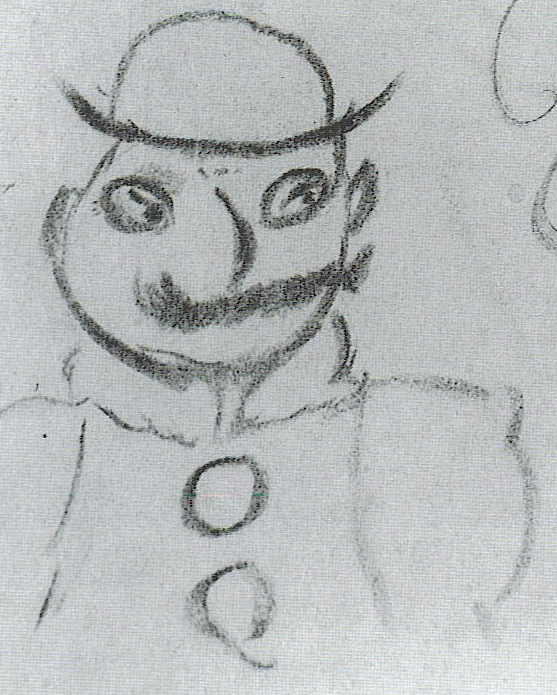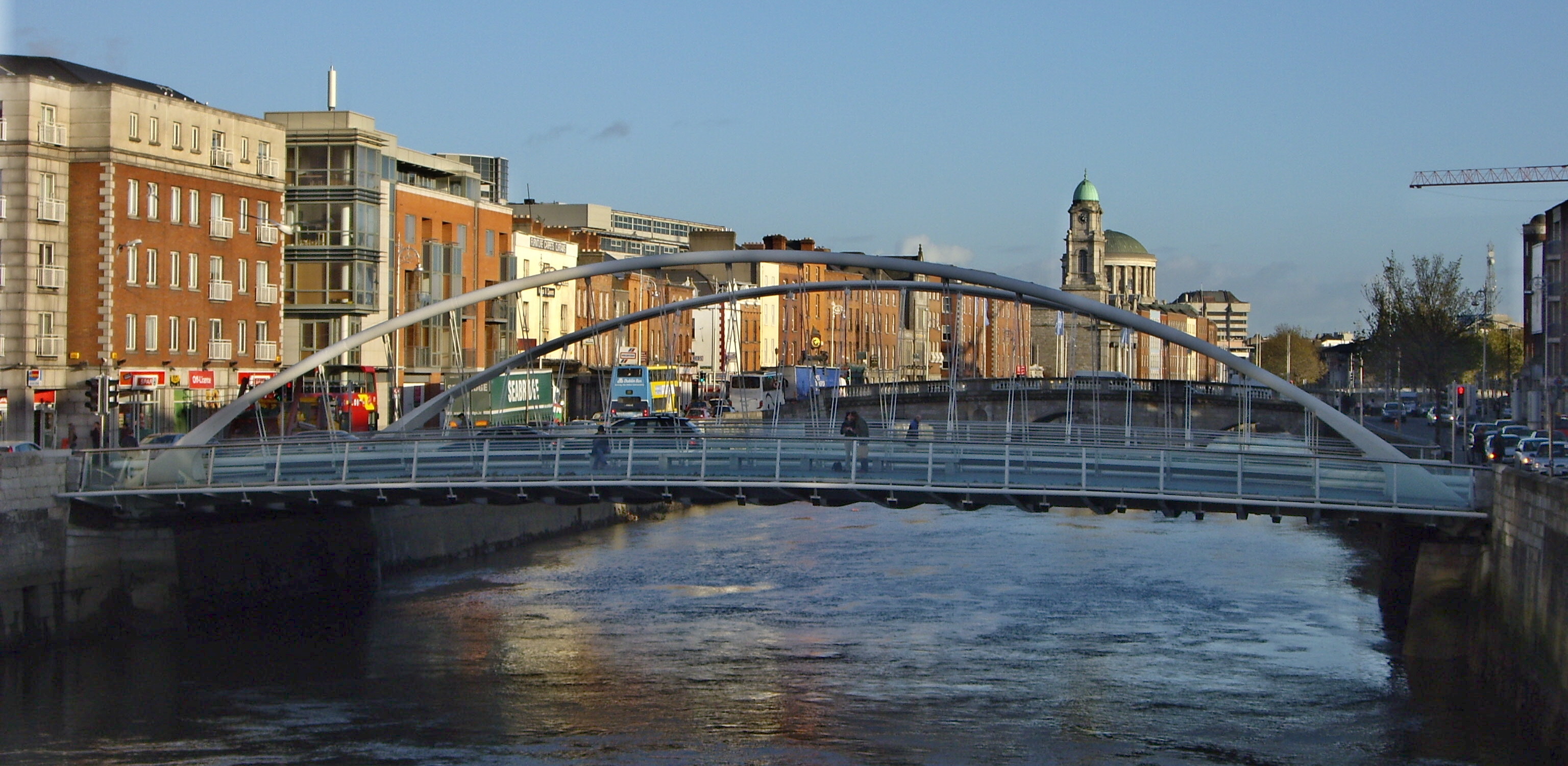Most people are willing, but the degree of architectural perspectivism and the current emphasis on the agent suppresses how important one’s obligation to the whole is. One is always part of everyone else’s background, which is what Joyce captures so richly in Ulysses. Furthermore, he recognises that something like architecture is part of a peripheral vision, rather than the centre of attention – that we are caught up in a depth of structure of claims and affordances.
Joyce's Dublin: the richness and diversity of urban life
Emeritus Professor of Architecture
- Joyce’s Dublin grows out of a dissatisfaction with the accounts of cities by architects, planners, even anthropologists and sociologists. In Ulysses, Joyce captures the richness and diversity of urban life.
- The idea that cities are emergent, that they develop themselves, that they are rooted in typicalities that give order to the city and that one is part of everyone else’s background, has been very difficult for architects and planners to manage.
- The question of urban depth is a way of understanding the city that is spatial; it’s got a topographic dimension as well as what we might call an existential dimension (how one inhabits reality).
The tragic set and the comic set
What is the importance of Joyce’s Dublin? Primarily, it grows out of a dissatisfaction with the accounts of cities by architects, planners, even anthropologists and sociologists. Joyce’s Dublin captures the manner in which a city “cities”, if I can use it as a verb. In part, this is a result of how architects have thought of the city since Vitruvius, where his tragic set – which is for the nobles and is characterised by beauty, coherence, richness of meaning, high land values and sophisticated culture – is contrasted with his comic set, which is mainly for artisans and merchants. Between the Renaissance and the twentieth century, the attributes of Vitruvius' Tragic Set were reduced to the protocols of form-and-space. It is very difficult to reconcile these protocols with the richness and diversity of urban life; and the Dublin of Ulysses offers a substantial corrective. It is ultimately an ethical question.
Living in Joyce’s Dublin
Dublin, at that time, was a city with the highest death rate in Europe – there were many urban poor, and it was common for up to nine people to be living in a room. Joyce sets the novel in the equivalent of the comic set: he avoids all the institutional centres. He recognises that people are not all well behaved, that they are vexed, that they are as likely to be evil or to misunderstand as they are to be kind or generous.

Dublin bird market (which was on Canon Street). Monypeny Corner is mentioned in Joyce’s Ulysses, along with half the city. Wikimedia Commons. Public Domain.
“Dear dirty Dublin”
“Dear dirty Dublin” conforms to this adherence to the comic set. The novel takes place within the deep metabolism of the lower middle class background of the city.
The most celebrated urban institutional centre that is inhabited is the library, and we realise how much of urban life is built out of this background and how people make up one another’s background. For example, Bloom, a Hungarian Jew and immigrant to Ireland, who converted first to Protestantism and then twice to Catholicism, is compared to Ulysses. This makes the immigrant the equivalent of the hero of Classical culture and Dublin a re-enactment of the Mediterranean origins of European urban culture.
Bloom’s experience in Ulysses

A page of Joyce’s notes. Leopold Bloom drawing by James Joyce, before 1941. Wikimedia Commons. Public Domain.
Bloom will run into people who are attentive to him, as well as people who abuse him, call him a “dirty Jew” and throw things at him, and then there’s the degree to which he is attracted to women – he allows his wife to have an affair with Blazes Boylen. There’s one point at which the father of Stephen Dedalus is in a bar, and he looks down and sees the remains of lunch. Sitting on a crusty loaf of bread is a sardine, covered by a glass dome. Joyce doesn’t make a fuss about it, but the reader will immediately recognise the allusion to Ichthys, the fish ideogramme representing Christ, recumbent in the Anastasis Rotunda. This capacity to make the absolutely humble resonate with what is exalted is part of what the “dear” in “dirty Dublin” is all about.
Urban planners
What urban planners and architects tend to do is see the city as defective and in need of improvement. Characteristically, it ends up with wonderful rendez-vous with people at four o’clock in the afternoon, obeying all the circulation patterns and everything working smoothly. They very rarely indulge the world that one sees in novels, films or other visual arts because that’s full of conflict. It’s full of partial understandings, as anthropologists have been discussing since the 1980s. How to adapt their techniques to a proper understanding of the city is a long-standing project in architecture, in schools and in planning.
Artificial intelligence
The current idea or motif is that something like big data or artificial intelligence might be able to help. And I’m sure it would help – there are people who think that live updating, such as was organised in Rio for the Olympic Games, would be a way of managing the city. By contrast, the idea that cities are emergent, that they develop themselves, that they are rooted in typicalities that give order to the city and that one is part of everyone else’s background, has been very difficult for architects and planners to manage. The urgency of improving the city has taken over from the need to properly understand it. In general, one person’s vision of goodness is more evil than the evil that already exists.
Urban depth
The question of urban depth is against the gross generalisation of space and form, which means that everything concrete has to be supplied. It’s much more of a bottom-up approach to understanding the richness of urban life, incorporating its supposed difficulties, its indebtedness to deep metabolisms – of construction, but even more of how it survives and thrives. It is a way of understanding the city that is spatial; that is to say, it’s got a topographic dimension as well as what we might call an existential dimension (how one inhabits reality), for which the city is our best example of a depth structure that is in turn dependent on deeper structures.
Part of a metabolism

James Joyce Bridge, in Dublin, the city that inspired the author’s entire narrative. Wikimedia Commons. Public Domain.
If there’s one thing I would like people to come away from Ulysses with, it would be the polycentric nature of the way the city happens. It happens partly through fragments of buildings, fragments of objects, but it’s also distributed amongst all the people and characters – both active in it and remembered – and their residences. It’s not simply a performance of heroes and the rest of the city is background. The whole city is speaking with greater or lesser voice, and recognising that one is part of a metabolism of this kind would be the primary insight that I think one should take away from Ulysses.
Discover more about
Dublin from a different perspective
Carl, P. (2019). Culture, nature, a punkt in spice. In E. Braae & H. Steiner (Eds.), Routledge Research Companion to Landscape Architecture. pp.15-31 Routledge.
Carl, P. (2015). Convivimus Ergo Sumus. In H. Steiner & M. Sternberg (Eds.), Phenomenologies of the City: Studies in the History and Philosophy of Architecture. Routledge.
Carl, P. (2001). The Grid and the Block. Architectural Research Quarterly, 5(2), 101–103.
Carl, P. (2000). Urban Density and Block Metabolism. In K. Steemers & S. Yannas (Eds.), Architecture, City, Environment: Proceedings of Plea 2000 (pp. 343–347). James & James Ltd.